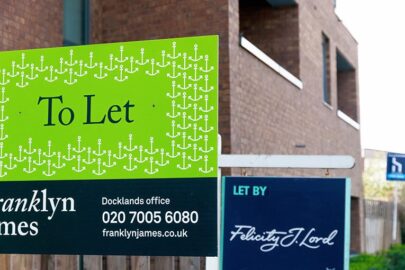Ever since the first product of its kind was launched into the mortgage market in 1996, the buy-to-let (BTL) sector has played an integral role in the UK’s mortgage market, housing millions of tenants via the private rental sector (PRS) while simultaneously helping professional and consumer landlords build property portfolios or use the product as a pension and investment vehicle to finance their retirement.
Over the course of the last 27 years, the importance of the BTL sector has continued to grow and the sector now accounts for a significant proportion of the current UK mortgage market. According to figures from USwitch, the sector represented 13.6% of total mortgage lending in 2022, with £8.5 billion worth of BTL properties purchased by UK landlords in the first three months of the year alone.
More recently, the sector has come under increasing pressure as rising interest rates, unfavourable tax changes and a squeeze on affordability as a result of the cost-of-living crisis has made securing an attractive rate on a new mortgage deal extremely difficult. This has resulted in many landlords becoming “stuck” or having to move onto a product transfer because the ICR and stress testing measures on many BTL products have proven untenable.
These increased mortgage costs have also resulted in higher costs for tenants as landlords, seeking to absorb the price hikes, move to increase rents or sell off property, leading to an increase in the number of tenants falling into arrears and a reduction in the number of rental properties in the private rental sector.
Given the shortage of affordable rental properties available in the market, this is a worrying trend. Figures from Rightmove show that tenant demand has already increased by 23% in the last year, while the number of available rental properties has fallen 9%, due to the challenges seen in the BTL sector.
At the same time, the average two-year fixed mortgage rate rose to 6.46 per cent in October 2022, the highest rate since 2008, according to Moneyfacts, resulting in many lenders increasing the level at which they stress test for affordability to 8%.
Beyond the rate
While mortgage rates have started to come down in some areas of the market, they are unlikely to ever return to pre-pandemic levels, so brokers with BTL clients looking to remain in the rental market need to look beyond the headline rate and do a bit more leg work to find their client an affordable solution.
The days of simply choosing the cheapest fixed rate product are over and brokers must now start to dig a little deeper and weigh up other options, such as whether assessing affordability based on the rental calculations using the lender’s ICR or disposable income is a better approach, particularly if the client wants to remortgage and borrow extra money to carry out renovations to update a property.
For example, to calculate affordability, the Loughborough uses an ICR of 130% at 5.5% for basic rate tax payers, or the product plus 2%, whichever is highest, so the level at which we stress test may well be lower than those offering a cheaper headline rate but stress testing at 8%.
Similarly, we also consider disposable income in affordability calculations to top up any shortfall in rent. This means for those landlords with a net disposable income of £300 a month once living costs are factored in, we will use 90% of that £300 disposable income for affordability purposes when calculating the loan value.
Obviously, the needs of every client will differ, so brokers must ensure they always explore every angle to find the most suitable option for their clients’ needs. In this rising interest rate environment, where profit margins are being squeezed and affordability measures are continuing to tighten, scouring the market and doing a bit more ground work on how affordability is calculated could may well prove invaluable in helping your client remain in the BTL market.
Ashley Pearson is national BDM at the Loughborough For Intermediaries
